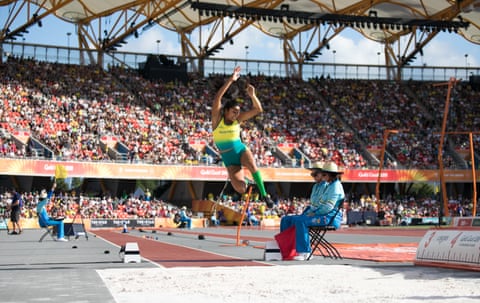“Australia made it the best,” says 15-year-old para athlete Kailyn Joseph of her Commonwealth Games experience. The Australian long-jumper, who has cerebral palsy, was one of an unprecedented number of athletes with disability who competed at the Games on the Gold Coast – there were nearly 300 in total, 73% more than in Glasgow four years ago.
She is beaming with positivity, and not simply because she topped her T37 class, finishing fifth overall in the T38 final. At the Commonwealth Games she has felt a sense of inclusivity and support like nowhere else in sport.
Indeed, for all the feats of athleticism, skill and determination seen in the past 11 days, arguably the most significant achievement has been the way para and able-bodied events have been seamlessly integrated to form a rich and highly watchable schedule. At the Commonwealth Games, even the medals table is a combination of able and para results.


“It’s the best idea,” says Joseph of the shared format, which was introduced in 2002. “Being a para athlete, we look forward to the Commonwealth Games so much because here we’re just like any able-bodied person. We get to be with everyone else in the same environment. We don’t get that in the Paralympics and World Championships. It’s so great because it brings the focus on to para athletes. I love it.”
What’s more, the attention has fallen on Joseph’s age and her talents rather than her disability: “I have messages saying, ‘You’re such an inspiration, you’re 15 years old and you’re competing with people who are 10 years older.’ It’s crazy,” she says. “And the athletes’ village couldn’t have been better. It was like home.”
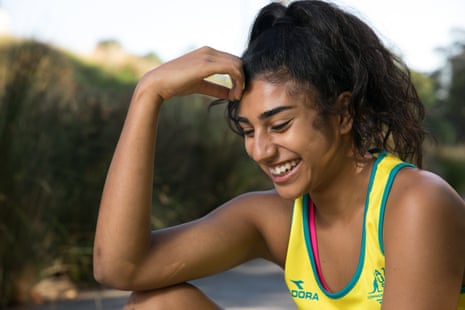
Kailyn Joseph – long jump

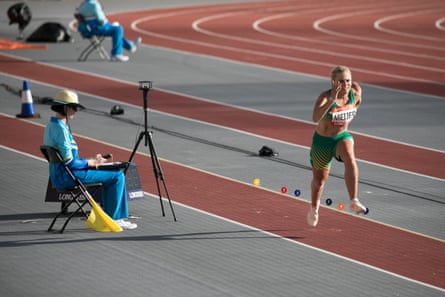
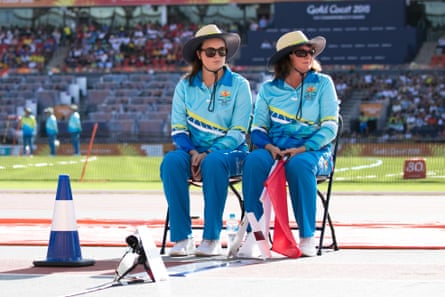


- Pictured above: Competitors in the T38 long jump during the track and field events at Carrara Stadium.
There were many tales of joy and woe on the track at the Carrara Stadium. Jessica Frotten of Canada crashed during the women’s T54 1,500m final while Madison De Rozario took gold for Australia; her compatriot Kurt Fearnley took silver in men’s T54 1500m final, beaten by Canadian Alexandre Dupont by just 0.23 of a second.
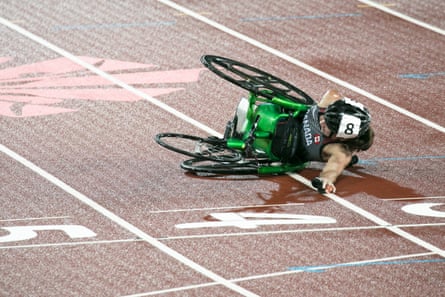


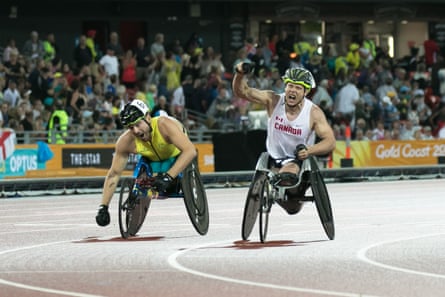
- Pictured above: Jessica Frotten of Canada crashing; Madison de Rozario receiving her gold medal; Kurt Fearnley smiling at family as he leaves the track after being beaten to the line by Alexandre Dupont.
Humble, gregarious, apprehensive, confident, proud – whatever their disposition and whatever their chances of victory, the para athletes all shared a sense of positivity about the value of para sport.
“Don’t look at disability, look at your ability,” Friana Kwevira told the media after winning bronze in the women’s F46 javelin, making her Vanuatu’s first ever Commonwealth Games medalist. “If I can make it, you can make it.”
“Here [at the Commonwealth Games] I feel I can contribute to the medal tally and make a difference,” said Bonnie Bunyau Gustin, a para weightlifter from Malaysia, who eventually missed out on a medal by a whisker, coming fourth in the men’s lightweight final.
There was even a visually impaired photographer, Andrew Follows, and his guide dog, Leo, on the sidelines at the swimming and gymnastics to capture the action. He too shared their delight, saying his Games experience had been “absolutely epic”.

Bonnie Bunyau Gustin – powerlifting


- Pictured above: Friana Kwevira (javelin) and Holly Robinson (javelin).

Jade Jones-Hall and Callum Hall – triathlon and marathon


- Pictured above: Ian Kent (table tennis) and Nerys Pearce (powerlifting).

Sophie Pascoe – swimming


- Pictured above: Timothy Disken (swimming) and Andrew Follows (visually impaired photographer).
In the para swimming, there was considerable success for Australian athletes. They claimed seven gold, contributing to an overall total of 73 medals alongside their able-bodied team-mates, thereby helping drive Australia to the top of the medal charts.
Timothy Disken was one of the most remarkable competitors. Just six months ago he lay in a coma in Canada, with doctors unsure if he would survive emergency brain surgery. Disken suffers from hydrocephalus – the excessive accumulation of cerebrospinal fluid on the brain.
He roared back to fitness and claimed gold in both the 100m freestyle S9 and 100m breaststroke SB8. “I’m pretty on top of the world,” he said afterwards.
- Pictured below: competitors in the para lawn bowls and para swimming events at the Commonwealth Games.



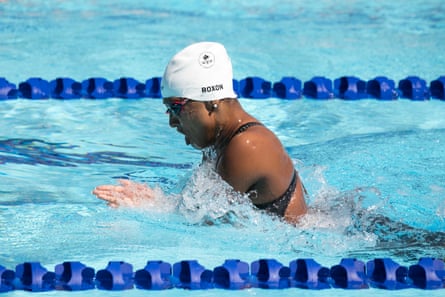
In the lawn bowls, Ken Hanson made history as he became Australia’s oldest Commonwealth Games gold medal winner, aged 68. To do it he had to produce the shot of his life in the men’s B6/B7/B8 match, blasting away two Kiwi bowls from the jack, giving the Australians a last-gasp win.
But it was not so much the stories of success that stood out as the spirit of togetherness that propelled the competitors. A fine example of this was in events that paired para and able-bodied entrants, such as Ann Muir, who operated as a “director” for her visually impaired team-mate Sue Curran, guiding her shots in. How fitting it was, then, that “Share the dream” was the motto of the Games.



- Pictured below: lawn bowlers Ann Muir and Sue Curran.

